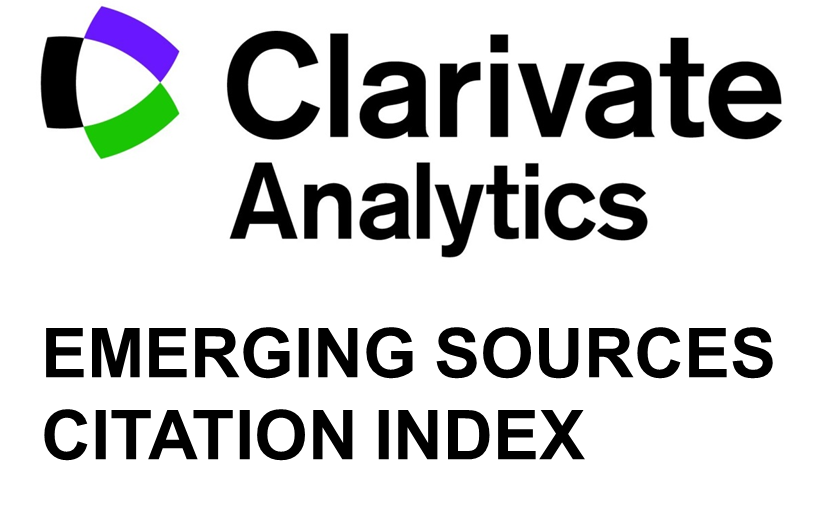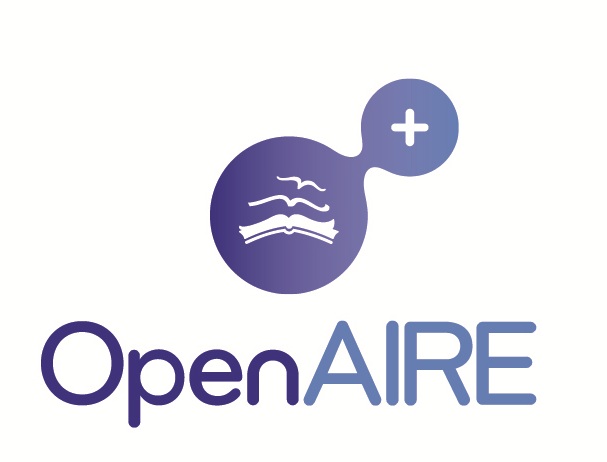SC-FDMA UPLINK SYSTEM IN HEAVILY FADED AREAS WITH LOW SIGNAL-TO-NOISE RATIO
Subhra Surochita MISHRA, Jibendu Sekhar Roy
DOI: 10.15598/aeee.v21i3.4987
Abstract
These Single carrier frequency division multiple access (SC-FDMA) has very low power consumption at the sender’s side, and this is one of the potential candidates for uplink in long-term evolution (LTE). The objective of this work is to explore the error probability of SC-FDMA system under sub-carrier mapping in heavily faded areas where the signal-to-noise ratios (SNRs) are very low. Wireless environment with heavily faded areas includes military radio systems; direct sequence spread spectrum system (DS-SS), global positioning system (GPS) etc. The localized FDMA (LFDMA) and distributed FDMA (DFDMA) are used to compare the performances of SC-FDMA in heavily faded areas. In heavily faded area with negative signal-to-noise ratio (SNR), the SC-FDMA system is implemented using modulation and encoding methods to receive a very weak signal. Here, binary phase shift keying (BPSK), quadrature phase shift keying (QPSK), 16-PSK, quadrature amplitude modulation (QAM) and 16-QAM modulation techniques are used to calculate the bit error rate (BER) performances. The results show the BER performances of SC-FDMA using mapping schemes for different channels, like, AWGN channel, Rayleigh channel, COST207TU, and COST207RA channel models for heavily faded areas. In AWGN channel, BER at -15dB is about 10 times more than BER at 15dB. The COST207 model shows that the BER is less in typical urban (TU) area compared to the rural area (RA).The performance of BPSK modulation in SC-FDMA system is better in heavily faded areas than other modulation schemes.
Keywords
References
CHO, Y. S., J. KIM, W.Y. YANG and C.G. KANG.MIMO-OFDM Wireless Communications with MATLAB. John Wiley & Sons (Asia) Pte Ltd, 2010.ISBN 978-0-470-82561-7.
MYUNG, H. G. Introduction to single carrier FDMA. In: 15th European Signal Processing Conference (EUSIPCO). 2007, pp. 2144-2148. ISBN 978-83-921340-2-2.
https://ieeexplore.ieee.org/document/7099187.
JAWHAR, Y. A., et.al. Improving PAPR performance of filtered OFDM for 5G communications using PTS.ETRI Journal Wiley. 2021, vol. 43, iss. 2, pp. 209-220.ISSN 2233-7326. DOI: https://doi.org/10.4218/etrij.2019-0358.
KAMATHAM,Y. and S. POLLAMONI. Implementation of OFDM System with Companding for PAPR Reduction using NI-USRP and LabVIEW. In:2019 IEEE International WIE Conference on Electrical and Computer Engineering (WIECON-ECE). 2019, pp. 1-4.ISBN 978-1-7281-4499-3. DOI: 10.1109/WIECON-ECE48653.2019.9019946.
KHAN, M., S. IQBAL and W. ASGHAR. A Review paper on: The PAPR analysis of OFDM systems. International journal of Mobile Network Communications & Telematics (IJMNCT).2014, vol. 04, iss. 1, pp. 1-13.ISSN 1839-5678. DOI: 10.5121/ijmnct.2014.4101.
NAIDU, G. R.and V. M. RAO. Performance evaluation of companded localized FDMA for LTE uplink communications.SN Applied Sciences, A Springer Nature Journal.2020, vol. 2, iss. 7, pp. 1291.ISSN 2523-3971. DOI: 10.1007/s42452-020-3092-6.
CABRIC, D. Addressing the Feasibilityof Cognitive Radios.IEEE Signal Processing Magazine. 2008, vol. 25, iss. 6, pp. 85-93.ISSN 1053-5888. DOI: 10.1109/MSP.2008.929367.
CHUNG, K. H.On Negative Correlation Bit-to-Symbol(B2S) Mapping for NOMA with CorrelatedInformation Sources in 5G Systems.Journal of the KIECS. 2020, vol. 15, iss, 5, pp. 881-888.ISSN 1975-8170.DOI: https://doi.org/10.13067/JKIECS.2020.15.5.881.
MYUNG, H. G., J. LIM and D. J. GOODMAN. Single carrier FDMA for uplink wireless transmission. IEEE Vehicular Technology Magazine. 2006,vol. 11, iss. 1, pp. 30-38.ISSN 1556-6072. DOI:10.1109/MVT.2006.307304.
CHISAB, R. F. and C. K. SHUKLA. Comparative study in performance for subcarrier mapping in uplink 4G-LTE under different channel cases. International Journal of Advanced Computer Science and Applications.2014, vol. 05, pp. 46-54.ISSN 2156-5570. DOI:10.14569/IJACSA.2014.050107.
MAHIND, U. and M. KADAM. BER Performance of OFDM System in Noise and Fading Channel for Modified SL0 Sparse Algorithm. Journal of Telecommunications System & Management. 2016,vol. 5, iss. 3, pp-363-368.ISSN 2167-0919. DOI:10.1109/ICGTSPICC.2016.7955329.
BANDOPADHAYA,S. and J. S. ROY. Spectral efficiency in wireless networks through MIMO-OFDM system, Chapter-10, Handbook of Research on Advanced Wireless Sensor Network Applications, Protocols and Architectures, IGI Global, 2017, pp. 249-277.ISSN 2327-3313.
FALCONER,D., S. L. ARIYAVISITAKUL, A. B. SEEYAR and B. EIDSON. Frequency domain equalization for single-carrier broadband wireless systems. IEEE Communications Magazine. 2002,vol. 40, pp. 58-66.ISSN 0163-6804. DOI:10.1109/35.995852.
CIMINI, L. J. J. Peak-to-average power ratio reduction of an OFDM signal using partial transmit sequences. IEEE Communications Letters.2000, vol. 4, iss. 3,pp. 86-88.ISSN 1089-7798. DOI:10.1109/4234.831033.
NOUNE, M. and A. NIX. Frequency-Domain Precoding for Single Carrier Frequency-Division Multiple Access. IEEE Communications Magazine. 2009, vol. 47, iss. 6,pp. 68-74.ISSN 0163-6804. DOI:10.1109/MCOM.2009.5116802.
RAMTEJ,S. and S. ANURADHA. On Companding Techniques to mitigate PAPR in SC-FDMA systems. International Journal of Wireless and Mobile Computing. 2020,vol. 18, iss. 3, pp. 295-302.ISSN 1741-1092. DOI:10.1504/IJWMC.2020.10028074.
CHAFII, M., F. BADER and J. PALICOT. SC-FDMA with Index Modulation for M2M and IoT Uplink Applications. IEEE Wireless Communications and Networking Conference (WCNC). 2018, pp. 1-5.ISBN 978-1-5386-1734-2. DOI:10.1109/WCNC.2018.8377028.
KASEM, E. and R. MARŠALEK. The Performance of LTE Advanced Uplink in Flat Rayleigh and Pedestrian Channels. Elektro Revue.2013, vol.4, iss. 3, pp.45-50.ISSN 1213-1539.
EBADINEZHAD,S. and S. HASAN. BER Evaluation in LTE SC-FDMA under Multipath Channels. International Journal of Recent Technology and Engineering (IJRTE).2019, vol.8, iss. 4, pp. 3539-3547.ISSN 2277-3878. DOI:10.35940/ijrte.D7767.118419.
MUSA, A. M., et. al., Distributed SC-FDMA sub-carrier assignment for digital mobile satellite. Alexandria Engineering Journal, Elsevier. 2021,vol. 60, iss. 6, pp. 4973-4980.ISSN 1110-0168. DOI:https://doi.org/10.1016/j.aej.2021.04.064.
RAWI, M. Al. Performance Analysis of OFDMA and SC-FDMA. Int. Rev. Appl. Sci. Eng.2017, vol. 08, iss. 02, pp. 113–116.ISSN 2062-0810. DOI:10.1556/1848.2017.8.2.2.






















